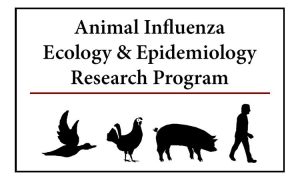Thanks to an Ohio Sea Grant-funded study, Dr. Richard Slemons and Dr. Andrew Bowman, both professors in the Department of Veterinary Preventive Medicine and directors of the Animal Influenza Ecology and Epidemiology Research Program, and their research team surveyed wetland areas in northern Ohio to monitor for influenza A viruses.
The goal of the project was to determine how long certain types of influenza A viruses, such as H5N1 (A.K.A. avian flu), could survive in marshes surrounding Lake Erie if introduced by wildlife into the environment. Slemons and Bowman’s research team included staff, undergraduate, graduate and veterinary students, field assistants and a certified wildlife biologist who served as a consultant.
“We do know that, at optimal temperatures and water conditions, influenza viruses can persist for 30 days, if not longer,” Slemons said in a summary of the research project, published in the summer/autumn edition of Twine Line, Ohio Sea Grant’s quarterly newsletter, which noted that the viruses currently found in these areas are not yet considered a threat to humans.
“The viruses are very adapted to birds, and to waterfowl in particular,” Slemons said in the article. “They may occasionally infect people, but nobody has ever been shown to have a clinical illness caused by one of these viruses.”
The team created small replicas of the wetland environments to maintain in the laboratory, in which they placed several influenza A viruses. They continually recorded the viability of the viruses over a 30-day period, and now hope to expand the study to find out which strains of avian influenza can occupy these environments longer than 30 days, if any.
Twine Line said the overarching aim of this research is “to be able to provide recommendations for wildlife managers and public health officials if a virus strain of concern is introduced to the Great Lakes, and to offer training and knowledge before the problem becomes acute.”


Comments are closed